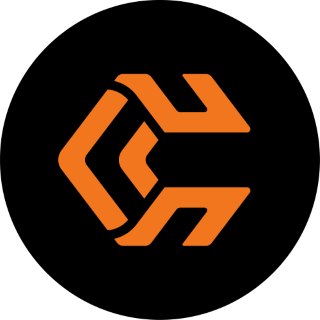If you’ve just bought one of IBM’s TotalStorage Enterprise Storage Servers and happen to know the right sales representative, you get a unique add-on for your new storage array: a fin.
A shark fin, that is.
“There’s an informal network of who you can get the fin from,” says John Power, the marketing manager for the Enterprise Storage Server, who explains that the shark fin is a reference to the product’s code name, Shark. “There are closets in IBM offices all over the world with these fins in them,” Power says.
One of the most common requests he gets from customers is to assign the plastic fins a part number, so they can be ordered from IBM’s product catalogue.
While most technology companies do not have official policies on how they create product code names, they are almost always dreamed up by engineers with the understanding that the code names will be for internal use only. It’s assumed the company eventually will develop a name for the product that can be trademarked.
Though larger companies sometimes tell their development teams to pick code names that have not been trademarked – geographical locations or species of fish, for example – engineers typically are given latitude in the names they can use. This is because employers know that a popular code name can help engineering teams build an emotional attachment to the product, says Burt Alper, the founder of Catchword Branding, a consulting firm that provides technology companies with advice on naming products.
Most marketing folks think the code name will be unceremoniously dropped once the company goes public with the product’s brand name, Alper says. But some products are the subject of such intense media scrutiny that their code names take on a momentum of their own. And that’s where the problems begin.
Take Apple’s Power Macintosh 7100. Designed in the early 1990s, it was code-named Sagan as a tip of the hat to the noted astronomer, Carl Sagan. But when Sagan heard that the next version of the Power Mac was going by his family name, he took exception. Before long, Sagan’s lawyers were asking Apple to change the 7100’s code name. Apple complied, but the product’s new code name, BHA, which was widely taken to stand for “Butt-Head Astronomer,” did little to appease Sagan. He sued Apple in 1994, and the case eventually was settled out of court.
Even companies that try to steer away from code-name trouble can find themselves in rough waters. For example, Intel has mandated that its engineers code-name products only after geographic locations, which generally cannot be trademarked. But that policy didn’t prevent the folks who put on the Tanglewood music festival in western Massachusetts from asking the chip maker to rename its multicore Itanium 2 processor. Last December, Intel changed the product’s code name from Tanglewood to Tukwila.
Intel, apparently, was following the same strategy that Alper recommends to his clients. “The counsel we provide is to use code names that are so ridiculous and so ludicrous that you would never consider launching them,” he says.
Most of Alper’s clients realize that hip or edgy code names like Shark or Longhorn generally cannot be trademarked and are unlikely to make it past company lawyers, so they tend not to pay much attention to the code-naming process. “Corporate folks don’t take it that seriously,” he says.
Eric Allen, a research scientist at Sun Labs, says, “The most important aspect of a code name is it just allows us to talk about the project we’re working on without having to say ‘the project we’re working on.'”
Engineers often use code names as a way to flex their creative muscles, he says. Java’s code name Oak served as a metaphor for what the language was designed to be.
“It gave people a sense of the stability and safety they were trying to build into the language,” Allen says. He adds that he would love to see the code name for his current project – an advanced programming language for supercomputers – eventually become a product name, but he’s not sure that will ever happen. Allen declines to mention the code name. “I’m worried about a Carl Sagan-like incident,” he says.
Still, the high-tech industry might be more fun if these colorful names stuck around after products were launched. Shark inspired IBM’s competitor, StorageTek, to code-name one of its low-end disk arrays Orca, after the species of whale that has been known to kill sharks, according to Ray Lucchesi, the senior strategic business development manager at the storage company.
“Once a product is code-named, it takes on a life of its own,” Lucchesi says.
That was certainly the case with Apple Computer’s Macintosh, Lisa and Newton products as well as Digital Equipment’s Alpha line of processors and servers, all of which ended up adopting their code names. IBM’s Shark is unusual in that it has lingered, even though the company has given the product an official product name. IBM even mentioned Shark in its 2000 annual report, Power says.
“We’ve probably broken every rule of Marketing 101,” he says. “I’ve been with IBM for 24 years; it’s the longest I’ve known a code name to last.”
Power says he still occasionally gets what he calls “integrated marketing and communications grief” at IBM, but the fact that customers keep bugging his sales force for those shark fins and, more importantly, buying those storage systems allows him to keep breaking the rules.
Who knows, maybe IBM’s Shark success will lend a little more color to an industry whose product names sometimes sound like the unhappy result of a stress ball dropping on a marketing executive’s keyboard.
After all, which name sounds better? The z990 or T-Rex? The BigIron MG8 or Mucho Grande? Windows for Workgroups 3.11 or Snowball?
A shark fin, that is. “There’s an informal network of who you can get the fin from,” says John Power, the marketing manager for the Enterprise Storage Server, who explains that the shark fin is a reference to the product’s code name, Shark…






